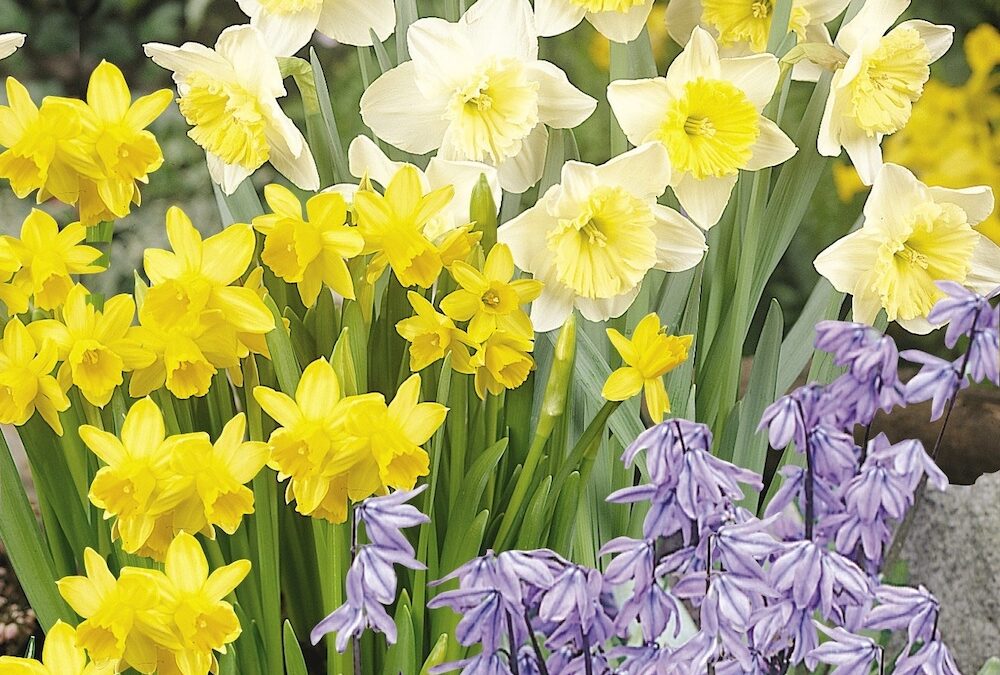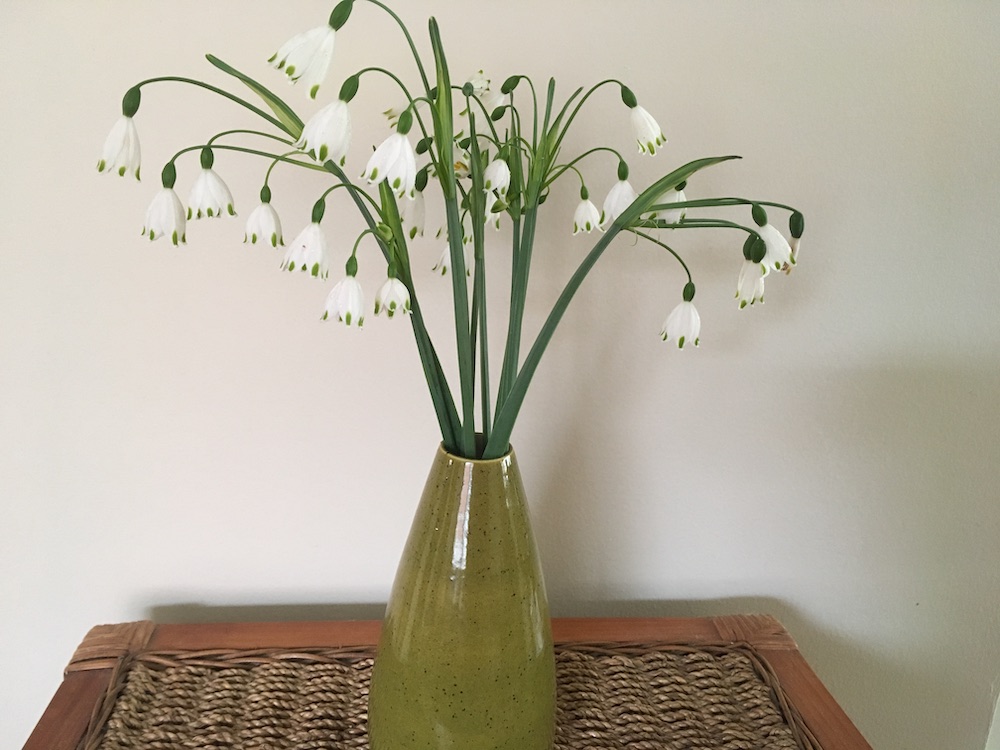
Summer snowflakes as a cut flower. (C) Jo Ellen Meyers Sharp
Gardeners with deer as regular breakfast, lunch and dinner guests know tulips are a favorite on the menu. Gardeners also know daffodils are the top go-to plant for spring flowers because no critters bother them.
There are other deer resistant spring bulbs besides daffodils. Some may even be deer proof because they contain a bitter alkaloid that’s toxic to mammals.
Planting spring blooming bulbs is a fall ritual. These harbingers of the new season remind us the earth is renewing itself.
Below are some deer resistant spring bulbs for the landscape. Granted, none of these is as gorgeous or colorful as a garden full of tulips, but they have their own beauty to be appreciated. Especially if they keep their flowers.
Deer Resistant Spring Bulbs
Allium
Ornamental alliums are members of the edible allium family, such as onions, garlics, shallots. There are several types of ornamental alliums, from short to tall, to small to large balls of flowers atop stems, to sparkly flower tops.
Alliums bloom in spring, early summer and mid- to late-summer, so you can plant what you’d like to have their show. The most common color is purple, but alliums have white, red or pink flowers, too.
Spring blooming allium
- Allium karataviense
- Purple Sensation
- Mount Everest
- Gladiator
- Globemaster
Summer blooming allium
- Allium christophi
- Allium nigrum
- Allium sphaenocephalon
- Allium senescens glaucum
- ‘Millenium’, the 2018 Perennial Plant of the Year
- ‘Serendipity’
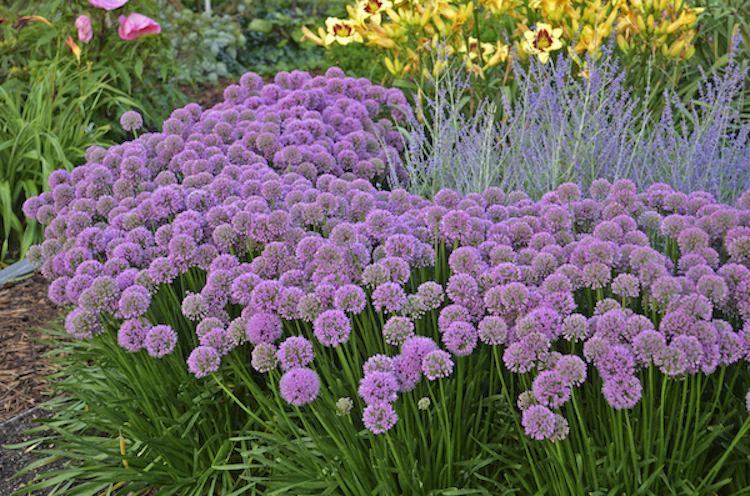
Millenium allium was the 2018 Perennial Plant of the Year. Photo courtesy perennialresource.com
Iris
From the native crested iris to the amazing German or bearded iris, there’s something for everyone. Iris grow from a rhizome, an underground bulb-like stem.
- Crested iris, (I. cristata) grow in part shade
- Japanese iris ( ensete), likes moist soil, good for rain gardens
- Siberian iris, ( sibirica), tolerates part sun, foliage turns red in fall
- Dwarf iris, ( reticulata, I. pumila), early blooming varieties
- German or bearded iris ( hybrida), some have wonderful fragrance and some rebloom in late summer, such as ‘Immortality’ (white) or ‘Feed Back’ (blue.)
- Dutch iris ( x hollandica), a favorite among cut-flower enthusiasts, hardy in USDA Zone 6 but not reliably here
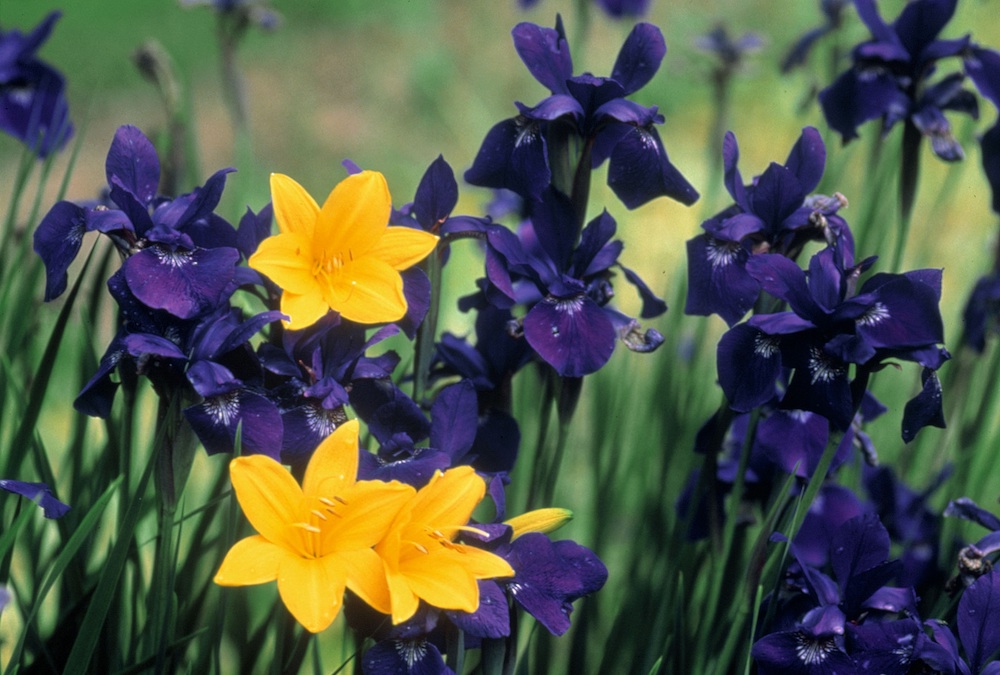
‘Golden Chimes’ daylily (Hemerocallis) paired with
‘Caesar’s Brother’ Siberian iris.
Fritillaria
One of the more unusual spring and early summer bulbs.
- Guinea hen flowers ( meleagris) has a white, pink or burgundy checkered pattern on downward facing flowers. Plant in full sun to part shade. About 12 inches tall.
- Crown imperial ( imperialis), resistant to rodents
- Persica fritillaria ( persica), tall purple or white flowers. The purple ones have been part of Spring Bloom at Newfields the last few years.
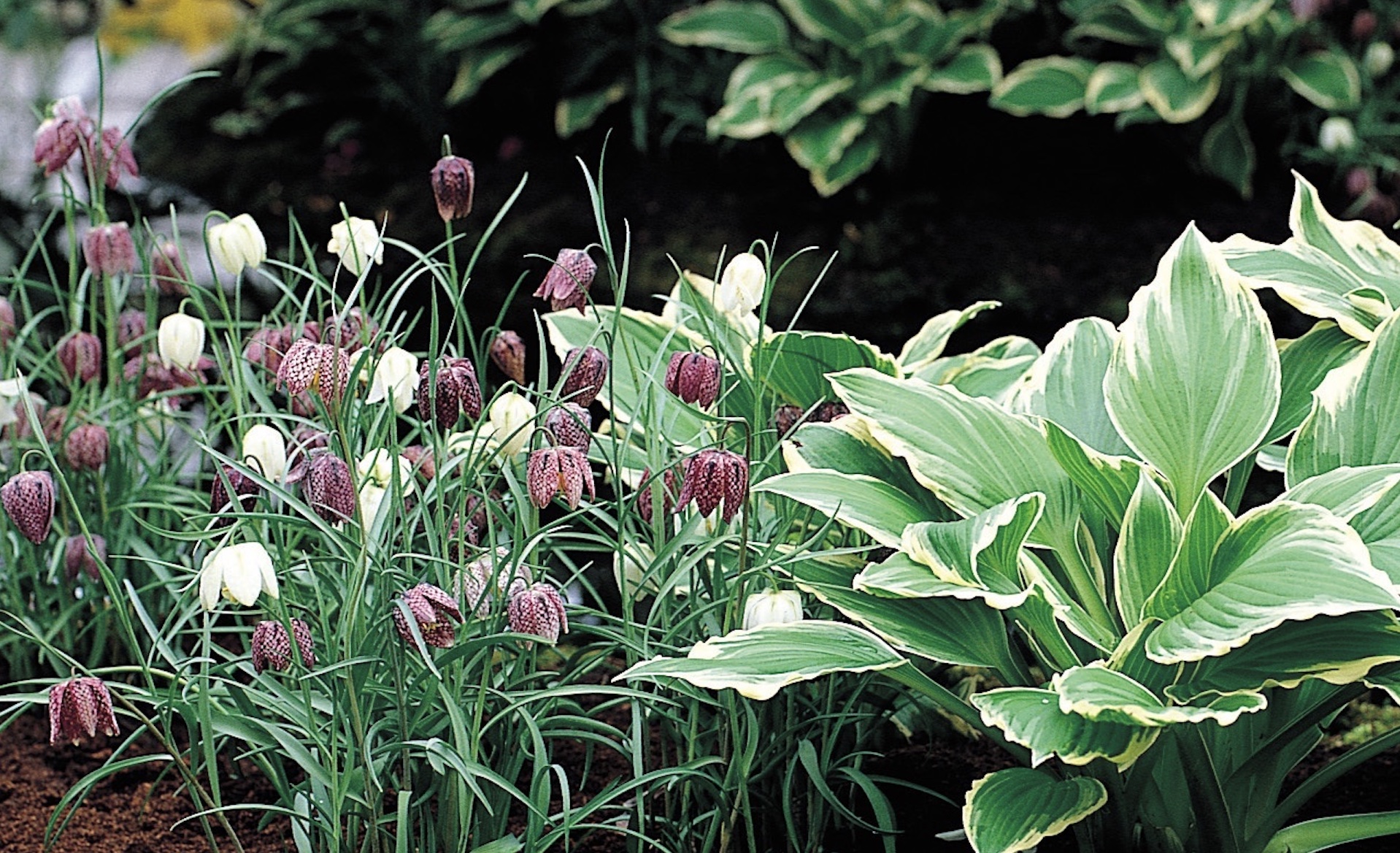
Guinea hen fritillaria with hosta.
Camassia
(C. scilloides and C. angusta) are native in Indiana, C. quamash is native to the Northwest, but grows in Hoosier landscapes. Sometimes called Indian hyacinth, the plant has spikes of blue or white flowers. If the weather starts to warm up, these plants shut down.
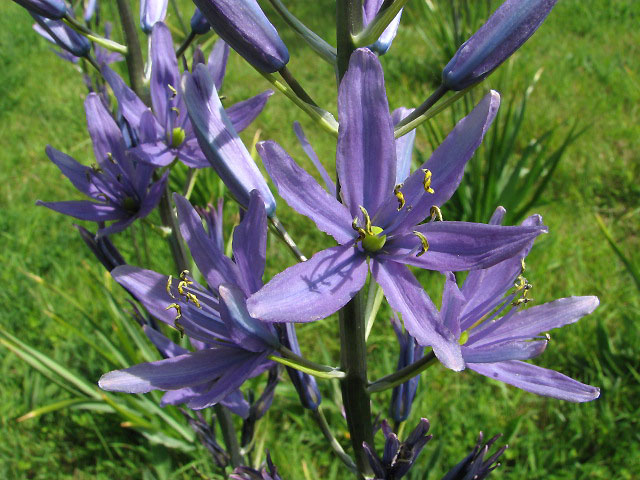
Wild hyacinth or camassia.
Special or minor bulbs, great for naturalizing
Siberian squill (Scilla siberica)
Glory-of-the-snow (Chionodoxa spp.)
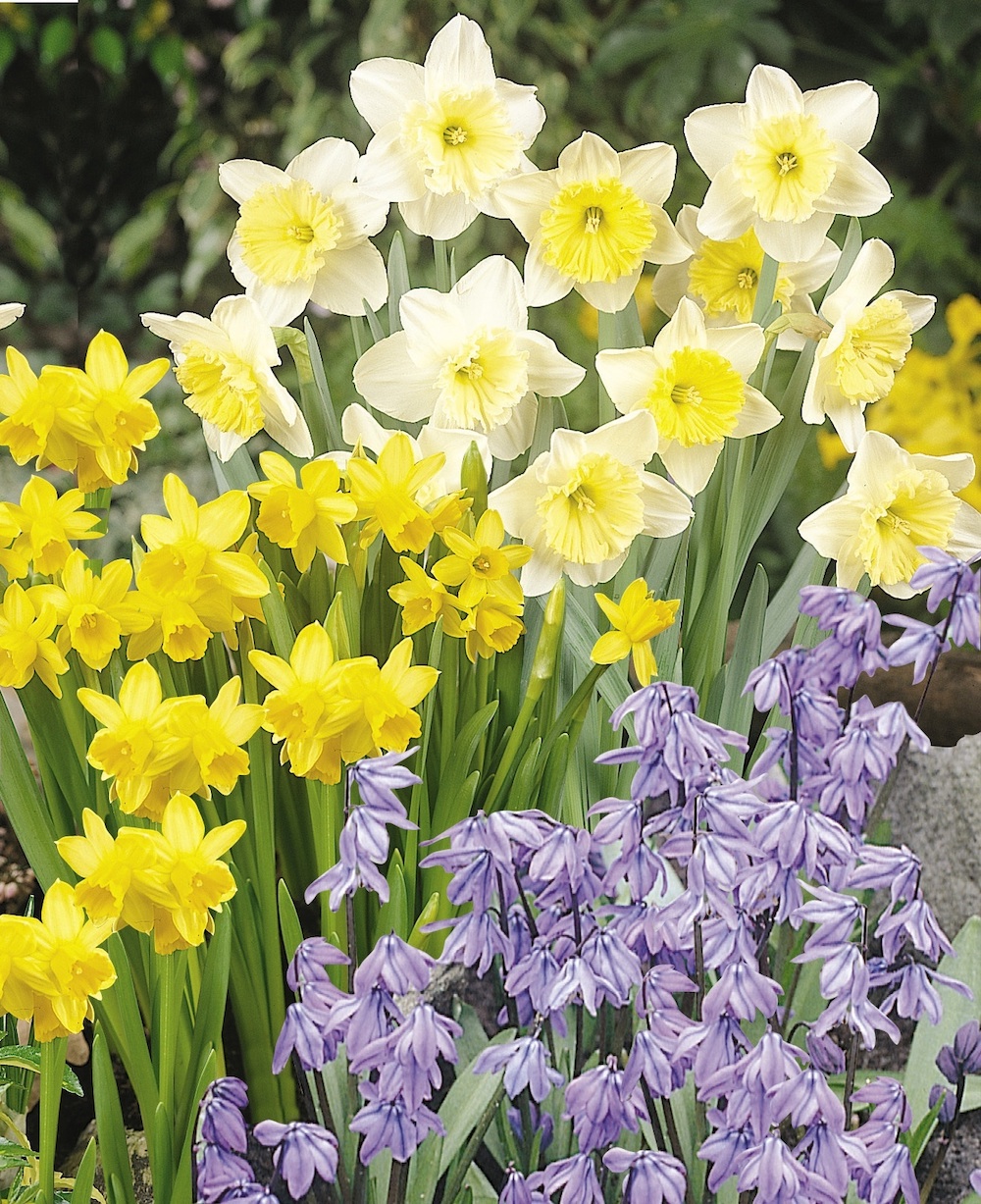
Siberian squall and daffodils make a deer-proof planting of spring bulbs.
Deer-proof spring bulbs
Daffodils (Narcissus spp.)
A favorite spring bulb for about anyone because daffodils are the most reliable. Plant them once and enjoy them for years Daffodils come in colors other than yellow, too. There are white, orange, pink and gold varieties. Many daffodils are fragrant. Daffodils also are early, mid- and late-season bloomers. ‘February Gold’ blooms early and ‘Poeticus’ blooms late.
Snowflakes (Leucojum aestivum)
Snowflakes bloom mid- to late spring. Sometimes called summer snowflakes, they have white, bell-shaped, downward facing flowers and will get about 12 to 18 inches tall.
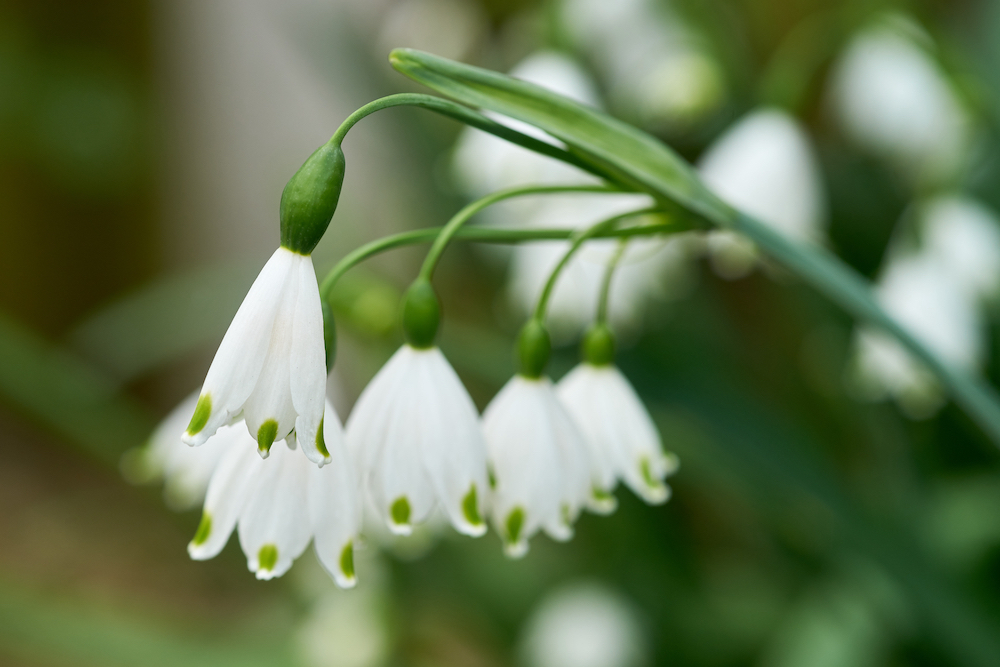
Summer snowflake flowers. (Miksov/Depositphotos.com_
Snowdrops (Galanthus spp.)
Some of the first spring bulbs to bloom, frequently popping up through snow, thus its name.
- Common snowdrop ( nivalis)
- ‘Flore Pleno’ ( nivalis), has double green and white nodding flowers
- Giant snowdrops ( elwesii)
- Crimean snowdrop ( plicatus)
- Green snowdrop ( woronowii), has small green dot inside petals
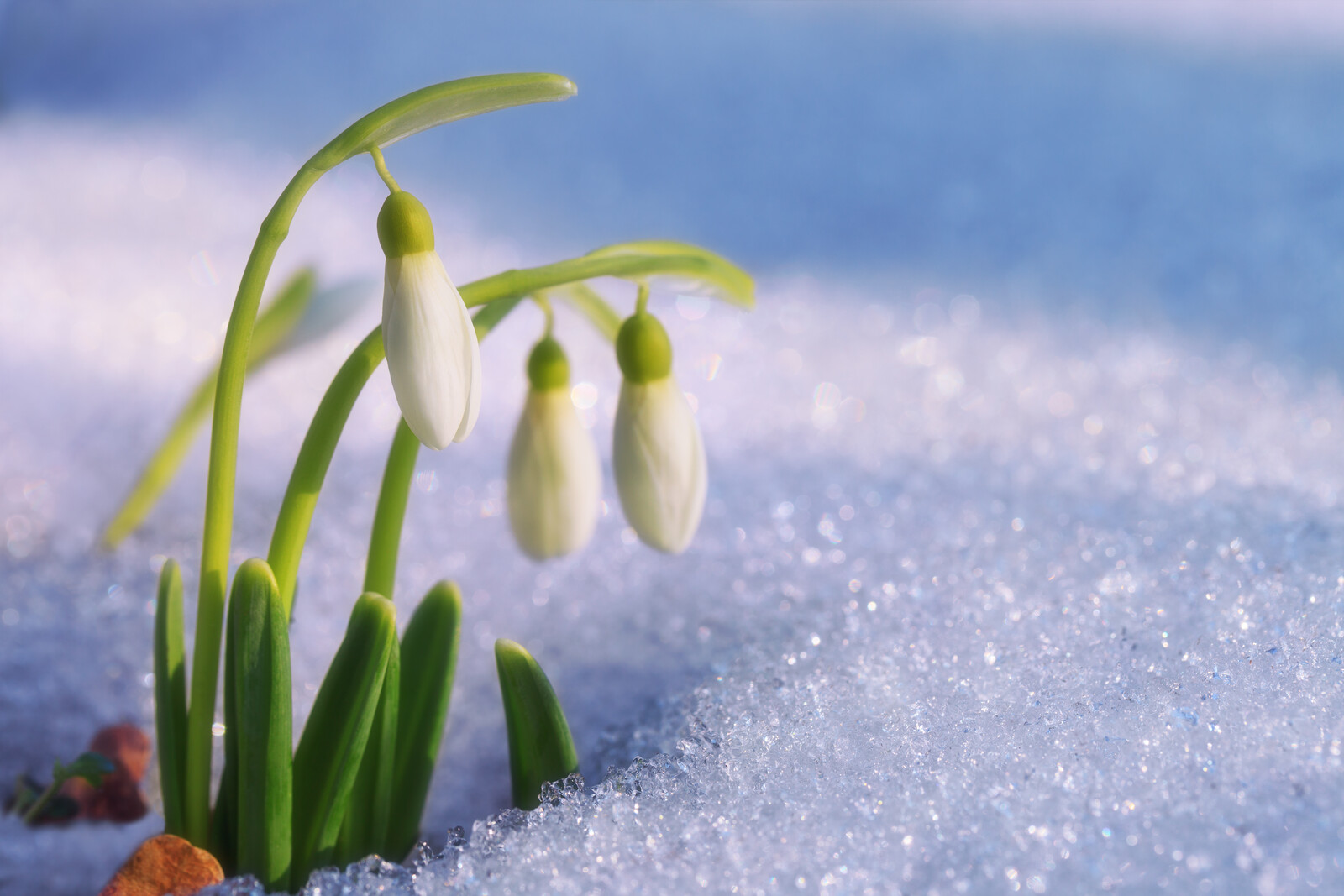
Snowdrops break throughs snow to earn their name. (All32/canstockphoto.com)
How to plant spring blooming bulbs
- Plant bulbs pointy end up. Corms have are more flat. Plant those with the roots down.
- Plant bulbs about three time their height. If a bulb is 2 inches tall, plant it 6 inches deep.
- Back fill to cover the bulb. No need to fertilizer the bulbs. They are programmed to grow. Water well.
For help in your landscape
For more information about spring bulbs for your landscape, contact a Holeman pro.

